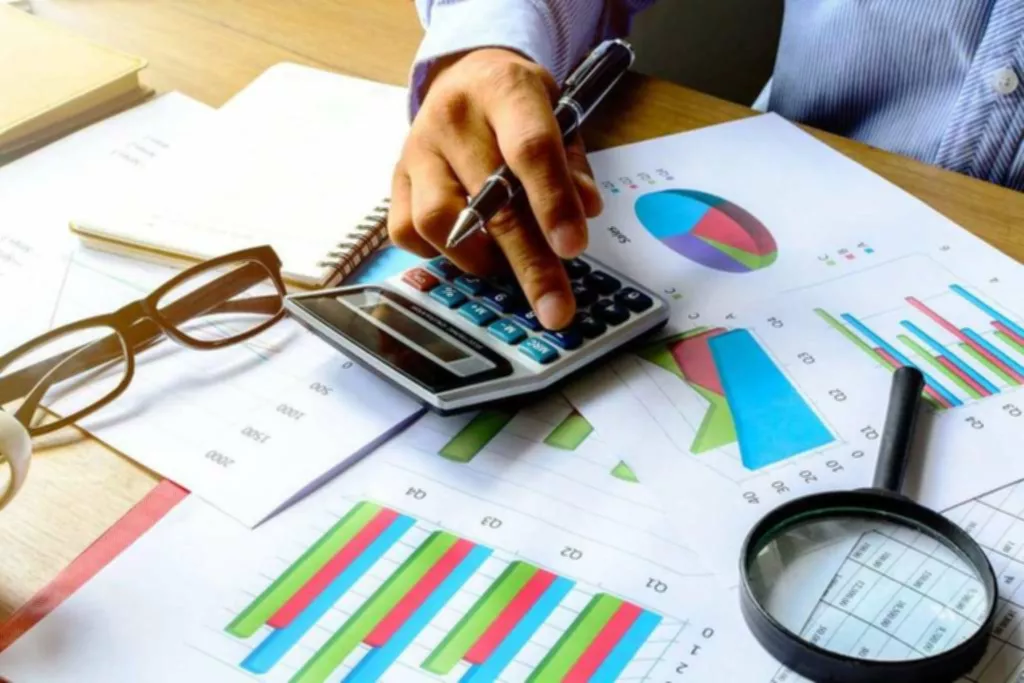Content
- History and purchase vs. pooling-of-interests
- What Does Goodwill Mean
- Join 446,005 entrepreneurs who already have a head start.
- Part-B Chapter 1: Overview of Computerised Accounting System
- GE’s Alstom acquisition: the case of purchase price accounting gone wild
- How is Goodwill Established and then Evaluated?

When the risk involved is high, a business firm fails to attain its capital requirements, which in turn hampers the execution of a managerial plan and the profit-making ability of the firm. So, it can be concluded that the higher the risk, the lower the value of goodwill. This process is somewhat subjective, but an accounting firm will be able to perform the necessary analysis to justify a fair current market value of each asset. In financial modeling for mergers and acquisitions (M&A), it’s important to accurately reflect the value of goodwill in order for the total financial model to be accurate.
What are the three types of goodwill?
- Purchased Goodwill. Purchased goodwill comes around when a business concern is purchased for an amount above the fair value of the separable acquired net assets.
- Inherent Goodwill.
You’ll need to determine the business’s value of net assets, which is equal to the business’s identifiable assets minus its liabilities. Next, calculate the Excess Purchase Price by taking the difference between the actual purchase price paid to acquire the target company and the Net Book Value of the company’s assets (assets minus liabilities). However, they are neither tangible (physical) assets nor can their value be precisely quantified. Outside of accounting, goodwill might be referring to some value that has been built up within a company as a result of delivering amazing customer service, unique management, teamwork, etc. However, this goodwill is unrelated to a business combination and cannot be recorded or reported on the company’s balance sheet. Because goodwill is so difficult to price, it can be very difficult to complete a goodwill calculation, particularly if you don’t have access to all the necessary data.
History and purchase vs. pooling-of-interests
We will look at how it is measured, how it is accounted for on a company’s balance sheet, and the implications of having goodwill on a company’s financial statements. We will also discuss the relationship between goodwill and other intangible assets and how it differs from tangible assets. This dichotomy in accounting treatment can lead to differences in the reported values of intangible assets among companies depending on whether they have gone through business combinations. One of the best illustrations is comparing the balance sheet of Kraft Heinz Company to the Coca-Cola Company.
Whether you represent an acquisition-minded corporation or are personally interested in owning your own company or new franchise. Transworld Business Advisors offers the professional services that successfully bring buyers and seller together. If a company has a goodwill account, you can find it in the assets portion of its balance sheet.
What Does Goodwill Mean
While companies will follow the rules prescribed by the Accounting Standards Boards, there is not a fundamentally correct way to deal with this mismatch under the current financial reporting framework. Therefore, the accounting for goodwill will be rules based, and those rules have changed, and can be expected to continue to change, periodically along with the changes in the members of the Accounting Standards Boards. The current rules governing the accounting treatment of goodwill are highly subjective and can result in very high costs, but have limited value to investors.

Negative goodwill usually occurs when the company being acquired can’t or won’t negotiate a fair price for their assets – for example, if a company is in financial distress. In economics, goodwill refers more generally to the positive reputation or image of a business. It can be thought of as the extra value that a consumer perceives in a product or service due to the reputation of the company providing it. This value can come from a variety of sources, such as a strong brand, positive customer reviews, or a history of high-quality products or services. Goodwill is generally calculated as the difference between the purchase price of a company and the sum of its fair market value. Such capital investment by a firm indicates a strong financial position, which builds up the reputation of the firm in the eyes of the stakeholders.
Join 446,005 entrepreneurs who already have a head start.
Under U.S. GAAP and IFRS, goodwill is never amortized, because it is considered to have an indefinite useful life. If the fair market value goes below historical cost (what goodwill was purchased for), an impairment must be recorded to bring it down to its fair market value. However, an increase in the fair market value would not be accounted for in the financial statements.
Impairment of an asset occurs when the market value of the asset drops below historical cost. This can occur as the result of an adverse event such as declining cash flows, increased competitive environment, or economic depression, among many others. Specifically, a goodwill definition is the portion of the purchase price that is higher than the sum of the net fair value of all of the assets purchased in the acquisition and the liabilities assumed in the process. During a business acquisition, it’s therefore important to consider factors such as brand identity, customer relations, customer loyalty and staff satisfaction to ensure purchases are made at a fair price.
Moreover, a business that uses advanced technology for production has a high-profit margin, as the cost of production decreases. Such increased repetition and high profit https://www.bookstime.com/ boost the value and goodwill of the firm. A business with a high-risk factor fails to win the trust of the stakeholders, like investors, bankers, lenders, customers, etc.
The benefit of a business having a good reputation under its name and regular patronage. Goodwill is not tangible like equipment, right to lease the premises or inventory of goods. It becomes important when a business is sold, since there can be an allocation in the sales price for the value of the goodwill, which is always a subjective estimate. Included in goodwill upon sale may be the right to do business without competition by the seller in the area and/or for a specified period of time. Sellers like the allocation to goodwill to be high since it is not subject to capital gains tax, while buyers prefer it to be low, because it cannot be depreciated for tax purposes like tangible assets.
Types of goodwill
These assets typically provide a long-term economic benefit to the company that owns them. Unlike physical assets such as building and equipment, goodwill is an intangible asset that is listed under the long-term assets of the acquirer’s balance sheet. When a business is acquired, it is common for the buyer to pay more than the market value of the business’ identifiable assets and liabilities. The accounting treatment of goodwill is guided by the Indian Accounting Standards (Ind AS) which are based on the International Financial Reporting Standards (IFRS). US corporations have no longer had to amortize the recorded amount since 2001.

According to Ind AS 102, Business Combinations, goodwill arises when an acquirer obtains control of an acquiree, and the acquirer’s interest in the acquiree is greater than the fair value of the identifiable net assets acquired. Goodwill is a term that is commonly used in both accounting and finance, but it can mean different things depending on the context. In accounting, goodwill is considered an intangible asset that arises when one company acquires another company for a premium over the fair market value of its assets and liabilities.
Part-B Chapter 1: Overview of Computerised Accounting System
While a goodwill asset has value and can bump up an acquisition price, it does not have an objective cash value. Ultimately, the value of a company’s goodwill lies in the eye of its acquirer. Since the value of goodwill can change due to circumstances, such as a change in customer base or reputation, it must be reflected correctly and reported accurately. Businesses are required to review this annually, as well as when a business is first acquired, per the FASB.

For instance, if company A acquired 100% of company B, but paid more than the net market value of company B, a goodwill occurs. In order to calculate goodwill, it is necessary to have a list of all of company B’s assets and liabilities at fair market value. In accounting, goodwill what does goodwill mean is an intangible asset recognized when a firm is purchased as a going concern. It reflects the premium that the buyer pays in addition to the net value of its other assets. It is classified as an intangible asset on the balance sheet, since it can neither be seen nor touched.
Join PRO or PRO Plus and Get Lifetime Access to Our Premium Materials
The development of any business unit depends upon the efficiency of the management. A business operated under the supervision of efficient managers will earn more profit, and is likely, to enjoy a high value of goodwill in the market. If a manager fails to properly execute the management plans, the financial position of the business is hampered, which ultimately decreases the value of goodwill of the firm. Purchased goodwill means the business simply purchased the other company, which is generally the concept in business goodwill. With all of the above figures calculated, the last step is to take the Excess Purchase Price and deduct the Fair Value Adjustments.
- In the meantime, start building your store with a free 3-day trial of Shopify.
- However, it needs to be evaluated for impairment yearly, and only private companies may elect to amortize goodwill over a 10-year period.
- However, businesses are required to evaluate goodwill in business for impairment (when the market value drops below the historical cost) on a yearly basis.
- The purchased business has $2 million in identifiable assets and $600,000 in liabilities.
- You can get these figures from the company’s most recent set of financial statements.
- When a company is being acquired by another one for a premium value, that amount, above what it is believed to be truly worth – its book value – is known as goodwill.
